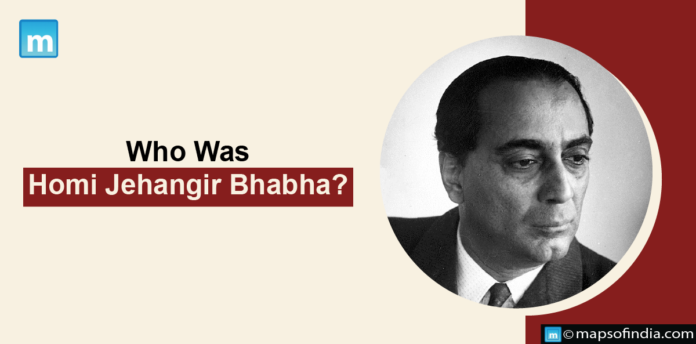Even though India’s first nuclear test occurred in 1974, it was possible because of a man who lived almost 20 years before that. That man was none other than “Father of the Indian Nuclear Program” Homi Jehangir Bhabha. He was the founder and professor of physics at the Tata Institute of Fundamental Research (TIFR) and the Atomic Energy Establishment, Trombay (AEET), renamed the Bhabha Atomic Research Centre in his honor. TIFR and AEET were the foundations of India’s nuclear energy and weapons programs. Let’s go through some unread pages of history and learn more about the Indian nuclear physicist.
Early Life
Bhabha was born to a renowned wealthy Parsi family on October 30, 1909, in Mumbai, India. His father, Jehangir Hormusji Bhabha, was a well-known lawyer, and his mother, Meherbai Framji Panday, was Sir Dinshaw Maneckji Petit’s granddaughter. Bhabha acquired his early education at Mumbai’s Cathedral and John Connon Schools. He subsequently went on to study mechanical engineering at Cambridge University in England. However, he quickly turned to physics and earned his PhD in 1935.
After graduating from Cambridge, Bhabha returned to India and joined the Indian Institute of Science in Bangalore. He then moved to the University of Bombay, where he established the Tata Institute of Fundamental Research in 1945. TIFR quickly became one of the leading research institutes in India, and Bhabha played a key role in its development.
Why is Homi Jehangir Bhabha known as the Father of India’s Nuclear Programme?
Bhabha established the Trombay Atomic Energy Establishment in 1954. This was India’s first nuclear research facility, which was critical in developing the country’s nuclear weapons program. Bhabha was also essential in establishing the Indian Atomic Energy Commission, which was in charge of the country’s nuclear program. Bhabha was a great physicist who also served as a visionary leader. He was also a vocal supporter of the peaceful use of nuclear energy. He thought nuclear energy might benefit millions and worked relentlessly to promote its growth in India.
Fun Fact: Homi Jehangir Bhabha and Robert J. Oppenheimer were friends. Yes! After World War II, the two men met in the early 1950s and quickly bonded over their shared love of physics and commitment to using science for peaceful purposes. They exchanged ideas and advice on nuclear physics, and Oppenheimer helped Bhabha to establish TIFR. Bhabha made significant contributions to India’s nuclear program. He laid the groundwork for India’s nuclear power business and contributed to India becoming a nuclear weapons state. He also played a vital role in the international community regarding nuclear issues.
Bhabha was a great artist and musician, in addition to his expertise in nuclear physics. He was an accomplished painter and sculptor who played the sitar and the piano. He was a well-rounded person with a diverse set of interests. In 1966, Bhabha died in an Alps plane disaster. He was only 56 at the time. India mourned his passing, but his legacy lives on. Oppenheimer was devastated by the loss and wrote a moving eulogy for his friend. He said that Bhabha was “one of the most brilliant physicists of our time” and “a man of great vision and humanity.” Homi Jehangir Bhabha was a brilliant scientist, a visionary leader, and a fervent peace advocate who left a lasting impact in India and worldwide.




